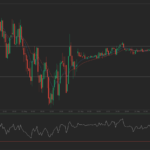 Gold slid on Friday to mark its third consecutive weekly increase and although the gain was not as impressive as last weeks 5%, it outlined continued investor interest towards the metal.
Gold slid on Friday to mark its third consecutive weekly increase and although the gain was not as impressive as last weeks 5%, it outlined continued investor interest towards the metal.
Comex gold for delivery in February fell 0.62% to $1 292.6 per troy ounce, settling 1.23% higher for the week. The precious metal slid to its lowest for the week at $1 272.1 on Tuesday but managed on Wednesday to breach the key $1 300 level and hit a week high of $1 307.80 a day later.
Gold did not see much activity on Monday as the US celebrated the Martin Luther King, Jr. Day and European markets were still rattled by the unexpected move from the Swiss National Bank to remove a three year-old cap of its currency against the euro, which resulted in a 30% increase in value for the franc.
On Tuesday the International Monetary Fund cut its projection of global growth for 2015 and 2016, with 0.3% for both years to 3.5% and 3.7% respectively. The organization said it expects a slowdown in growth across almost all major economies.
The IMF also asked governments to maintain accommodative monetary policies and refrain from lifting real interest rates due to the risk of deflation caused by plunging oil prices.
The announcement boosted the precious metal as gold traders launched a wave of save-haven bids, resulting in the biggest daily increase during the week for the metal.
However, gains were capped by a robust dollar and stronger Asian equities, boosted by lower-than-expected slowdown of growth in China. The country said its economy expanded by 7.3% over the fourth quarter of 2014, in contrast to the popular opinion for 7.2% GDP growth.
On Thursday the yellow metal scored its second and final daily increase during the week as the European Central Bank announced the launch of a quantitative easing program.
The bank said it will start buying €60 billion worth of bonds, with maturity between 2 and 30 years, every month until September 2016, outlining efforts to rejuvenate the European economy and fend off deflation. Gold prices got boosted by the move, as the metal is typically seen as a hedge against inflation.
During the week gold traders were also concerned about market instability caused by speculations the Eurozone will part ways with one of its 19 members. Greece may be the first country to exit the group, if the Syriza party wins at the elections scheduled on Sunday and manages to form a government.
The political group has promised to wipe out the majority of Greeces debt, while also leading the country out of the Eurozone.
After an eventful week, gold traders will be closely observing the upcoming Federal Reserve meeting next week, when policy makers will discuss whether to increase interest rates. The US economy is showing signs of improvement, which weighs in favor of a rate hike. However, inflation is still running below Fed’s target of 2%, pressured by plunging oil prices. An eventual increase in US interest rates would hurt gold’s performance.
Assets in the SPDR Gold Trust, the biggest bullion-backed ETF, increased by 10.76 tons during the week to 741.65 tons on Friday. Changes in holdings typically move gold prices in the same direction.
Pivot Points
According to Binary Tribune’s weekly analysis, February gold’s central pivot point on the Comex stands at $1 290.8. If the contract breaks its first resistance level at $1 309.6, next barrier will be at $1 326.5. In case the second key resistance is broken, the precious metal may attempt to advance to $1 345.3.
If the contract manages to breach the S1 level at $1 273.9, it will next see support at $1 255.1. With this second key support broken, movement to
the downside may extend to $1 238.2.





